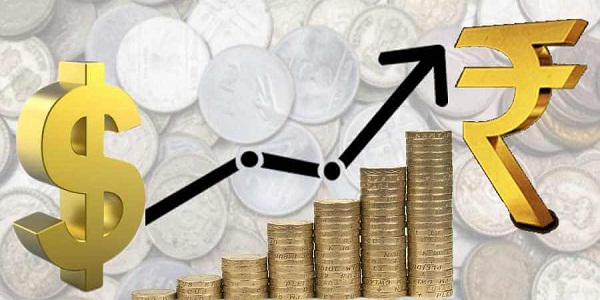-
UNION INTERIM BUDGET 2024-25 -
-
Are cryptocurrencies the future of the digital world economy -
-
Breaking Waves, Breaking News: Lakshadweep’s Recent Developments Explored -
-
The Impact of the Digital Economy on Business and Society -
-
Augmented Marketing: A Comprehensive Guide -
-
How To Strengthen Your Email Marketing Using AI -
-
How Artificial Intelligence and Digitization Are Transforming Our Lives -
-
What Data Science Tools do the Experts Recommend? -
-
Robotic Process Automation Will Transform Your Business? Check Here! -
-
Edge Computing: How it is Reshaping Cloud Infrastructure -
Marginal Recovery Shown by Rupee as it Opens at 70.78 against Dollar
New Delhi: After reaching the lowest point, Rupee showed some signs of recovery as it opened 22 paise higher at 70.78 against US Dollar on Monday. This recovery witnessed by Rupee was on the backdrop of selling of American currency by banks and exporters.
Apart from this, Rupees also got a push from the robust GDP figures. As per the data released by the Government on Friday, the growth rate of the Indian economy in April-June quarter was recorded to be 8.2 per cent. This was the two-year high growth rate driving on the good show by the manufacturing and farm sectors.
With this growth, the position of India is further strengthened as the fastest growing major economy as China’s expansion rate was recorded to be 6.7 per cent in the same quarter.
On Friday, there was a record downfall in Rupee as it hit the 71 mark against the US Dollar for the first time. The downfall was due to the worsening macro environmental factors.
Related: India Post Payments Bank to Boost Financial Inclusion
Rupee Might Reach 73 by Year End
The exclusive survey of ET revealed that rupee might further slide to as low as 73 against the US Dollar by the end of 2018. The survey said that if the currencies of emerging market (EM) continue to slip in response to the steady and unidirectional gains for the US unit. This also pointed to a period of sustained volatility in the foreign-exchange market.
The survey quoted Ashish Vaidya, Heads of Markets for India at Singapore’s DBS Bank, saying, “If the situation in emerging markets continues to deteriorate in the face of a strengthening dollar, the contagion will spread, weighing on the rupee as well. As long as oil keeps rising, the local unit will remain under pressure.”
Despite robust 8.2 per cent growth in GDP in June quarter, the currency-market instability and rising global interest in safe-haven assets could overshadow this growth in time to come.
Separately, crude oil price climbed nearly 10 per cent in the past fortnight amid tighter global inventories that are tied to US sanctions on Iran. India is one of the major oil importing countries, meeting three-fourths of its requirement through overseas shipments.
Also Read: ITDC Becomes Official Cargo Partner of Indian Air Force
Currency crashes in Argentina and Turkey have triggered concerns of a global contagion, with renewed worries over the US-China trade war. The Argentine peso and Turkish lira have slumped 52 per cent and 42 per cent, respectively, against the dollar this year.
Indonesia’s rupiah hit its lowest level in two decades, signalling that currency collapses are clouding the economic prospects of countries with higher trade deficits or excess of overseas spending over revenue.
A rise in the import bill worsens the country’s fiscal condition, prompting the government to borrow more. This, in turn, punctures global investor confidence as higher borrowing runs contrary to expected fiscal rectitude.
India’s current account deficit is expected to widen to 2.8 per cent of the GDP this financial year, up from 1.9 per cent last year, according to a Nomura Research report.
Investments in stressed assets could negate some of the negative impact on the currency.
“Overseas investors could invest in stressed assets,” said Ashutosh Khajuria, executive director and CFO of Federal Bank.
India’s proposed asset management companies to run bad assets could attract billions of dollars in overseas cash, show some market estimates.
The rupee has plunged 11 per cent on a year-to-date basis, making it the worst-performing currency in Asia. The rupee has weakened mainly due to widening trade deficit, rising crude oil prices and strong revival of the US economy, according to market experts.































